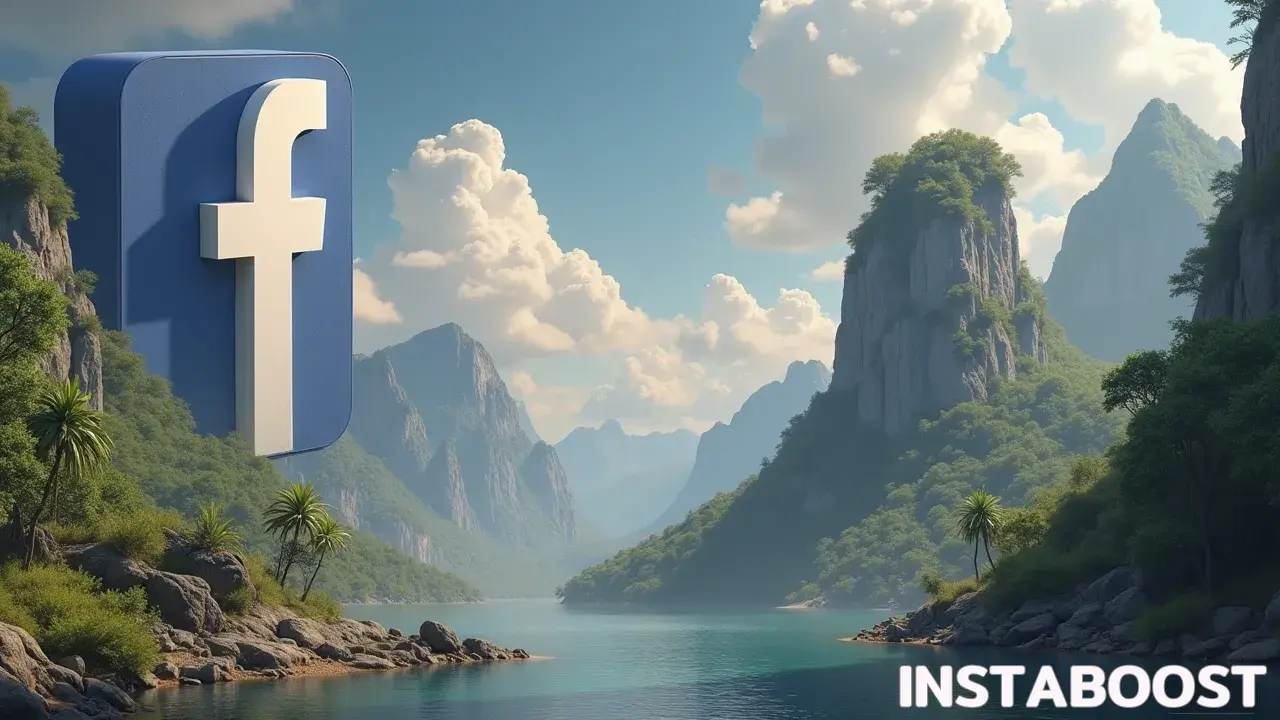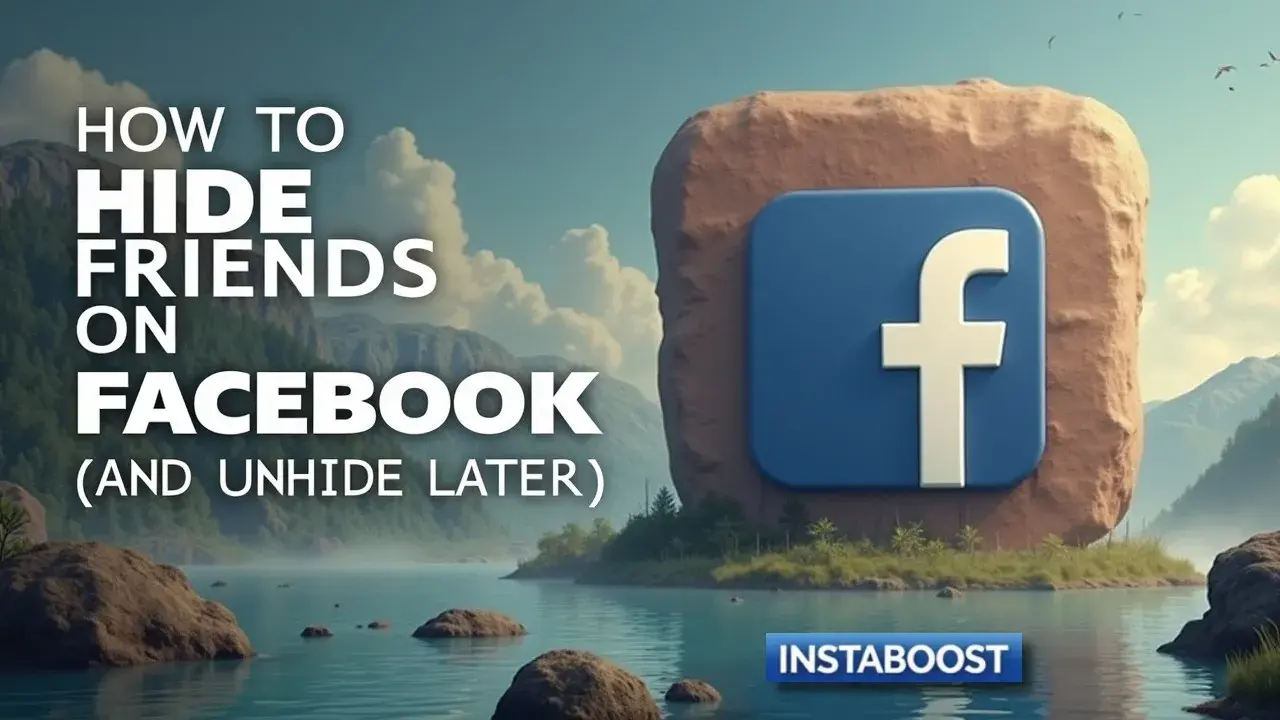How to Hide Friends on Facebook and Unhide Later?
Hiding friends on Facebook is a quick way to tighten control over who sees your connections. Adjust the setting before a big life update, then review later to confirm it still fits your comfort level. Unhiding takes seconds, so any change is easy to reverse if visibility needs shift. A smart path is to monitor comments and fewer unexpected DMs in the first week to gauge whether the adjustment improves comfort and focus.
Why Control Over Your Friend List Matters
Privacy on social platforms isn’t one switch. It’s a set of dials. Hiding friends on Facebook is a high‑leverage dial when you want to separate audiences, reduce casual snooping, and keep your network from becoming a shortcut for unsolicited outreach. It’s not about secrecy. It’s about context and timing. If you’re starting a new job, planning a move, or collaborating with creators on a campaign, tightening visibility a week in advance helps you see what actually drives engagement – your content, not curiosity about your connections.
The settings are reversible in seconds, so you can unhide later and bring back visibility once you’ve read the room. Pair the change with simple safeguards. Watch real comments versus vague DMs, track retention signals on key posts, and use targeted promotion sparingly so reach isn’t skewed by people trawling your network; if you also manage paid reach, keep it in its lane alongside Facebook promotion for businesses so your organic signals stay clean. If you run a Page or use your personal profile for brand activity, take a layered approach. Set friend list visibility to “Only Me,” keep public posts tuned for reach, and structure creator collabs to spotlight the work, not the web of contacts.
This works best when matched to intent. Hide friends before a high‑attention announcement, review after 3 – 5 days, and adjust based on feedback quality, not just likes. And if you need to share specific connections with close collaborators, use custom lists rather than opening your entire network. The steps to hide friends on Facebook are simple, and the real upside comes from when you do it and how you measure the response.

Proof You Can Trust: What Brands, Recruiters, and Creators Actually See
The campaign looked airtight until we tested it outside the bubble. When we hid friends on Facebook for a pilot group, a few myths fell apart. Nobody lost reach, and the people who mattered – recruiters, brand partners, real fans – still saw and engaged with posts.
What changed was the quality of engagement. With your friend list private, curiosity clicks drop and retention signals rise because attention shifts to the content and the comments. For those comparing tactics like muting visibility to vanity metrics, the same principle applies if you’re poking around settings or habit loops, whether you’re pruning follows, reconsidering where you surface likes, or even weighing external shortcuts such as buy Facebook profile followers, because stakeholders read behavior, not headcounts. If you’re job hunting or running creator collabs, that reads as credibility, not concealment.
Stakeholders judge you on threads, replies, and consistency, not a scrollable contact sheet. It also tightens your analytics. When your network isn’t a voyeurism magnet, you get cleaner readouts on saves, dwell time, and real comments, which helps you tune targeted promotion without paying to amplify noise. If you use ads or try a social analytics tool, go with reputable vendors and match spend to a clear hypothesis – for example, “Will hiding friends reduce low-intent DMs by 30% while maintaining click-through?” Then measure for a week. Pair the setting with basics that signal trust: a complete About section, public Featured posts that show your lane, and creator partner tags where relevant.
If warm intros are your thing, keep a small visible mutuals set by curating Featured Friends in a private list and making introductions via DMs – controlled exposure beats blanket access. For anyone searching how to hide friends on Facebook or how to view all your likes on Facebook, the credibility gain is the same: clarity. You’re not harder to vet – you’re easier to read. And if the context shifts, unhiding is a quick flip that restores social proof on your timing.
Set Your Privacy Like a Campaign: Time‑boxed, Measured, and Reversible
Not every result needs to stick. Treat hiding friends on Facebook like a timed A/B test, not a permanent switch. Set a clear seven to fourteen day window where you tighten visibility to Only Me, then watch the right metrics: comment quality, saves, replies, and profile taps from known segments. If you’re running creator collabs or planning a job move, pair the change with work that earns on merit – original posts, short videos, and thoughtful captions – so retention signals aren’t muddied by network voyeurism.
Use a small, targeted promotion from a reputable ad account to push one anchor post to a qualified audience, and remember that superficial boosts such as buy likes for Facebook posts can blur what’s actually working if they’re not clearly segmented in your analysis. That gives you a baseline that isn’t distorted by curiosity clicks from your friend graph. If your DMs slow down and your comment threads get longer or more concrete, that’s a good sign the privacy lever is helping. For brand or recruiter visibility, keep public posts and your About section tidy. They’ll still see and engage with your work, and you can whitelist specific friend lists if a partner needs social proof during a campaign.
Build safeguards by logging a simple testing loop – the date you hid friends, what you shipped, budget used, outcomes – and screenshot analytics so you can compare before and after without guesswork. The move works when it’s matched to intent – launch week, relocation, or a cleanup sprint – and when you unhide strategically to restore social proof after early momentum is set. If you keep the setting longer, refresh your Highlights and pin a post that shows credibility, so you’re not leaning on visible connections to carry trust. Treat it as a privacy dial, not a brake – pull it to clarify signal, then release it when visibility supports your goals.
Why “But It’ll Hurt My Growth” Is a Useful Myth – Until You Measure It
If you’re looking for hype, this isn’t it. Think of it as a steady reset for the worry that hiding your Friends list on Facebook will tank your momentum. In our pilot, people who said visibility dies after switching Friends to Only Me were reacting to vibes, not data. What actually dips is low‑intent rubbernecking – quick profile peeks from friend‑of‑friend surfers and “congrats!” drive‑bys that rarely lead to replies, saves, or link clicks. If you optimize for reach at any cost, it can feel smaller. If you optimize for qualified attention, it gets cleaner – and that’s the point.
Treat it like a micro‑campaign with a testing loop. Pick a two‑week window, post on your usual cadence, and pair the change with work that earns on merit – original posts, short videos, and thoughtful captions. Track retention signals and clean analytics: comment quality, saves, DMs that reference the post, and profile taps from known segments. If you’re running creator collabs or a job search, layer in targeted promotion from reputable partners so early momentum compounds where it matters, and remember that superficial spikes from tactics like purchase Facebook views online rarely translate into durable engagement.
The risk isn’t that hiding friends blocks recruiters or brand partners – they still find your work and message you. The risk is misreading silence while your audience resets around you. To hedge, schedule one high‑intent post 24 hours after the switch, and one mid‑funnel post, like a case study or mini tutorial, on day five. If your Facebook engagement rate by reach holds steady or improves, keep the setting. If it stalls, unhide and document what changed. Either way, you buy clarity – fewer mixed signals, more signal from real fans, and a reversible path matched to your timing, intent, and safeguards.
Close the Loop: Unhide With Intent, Keep the Gains
Don’t trust endings that look too tidy. After your seven to fourteen day window with Friends set to Only Me, read the signals and decide what to keep, what to loosen, and what to scale. If real comments, replies, and saves climbed while rubbernecking dropped, the test did its job.
Then unhide with intent. Shift to Friends or Custom lists for colleagues and collab partners, and keep Only Me for sensitive circles. You keep analytics clean without turning off discovery. If you’re running creator collabs or a career move, pair the unhide with targeted promotion from reputable partners and one strong post that earns on merit, the way some teams quietly validate distribution alongside experiments that buy Facebook shares without muddying the read.
You’re after engagement that sticks, not a spike that fogs the data. Keep a simple dashboard – profile taps from known segments, link clicks, and save rates – so the next tweak is obvious. If surface-level “congrats!” dipped but retention signals improved, that’s not lost growth.
It’s pruning. For most accounts, timed privacy plus quality posts beats a wide‑open Friends list for focus and brand safety. And yes, unhide takes seconds:
Settings & privacy > Audience and visibility > How people find and contact you > Who can see your Friends list.
Use it like a lever, not a vow. If you want a nudge, try a small paid boost with frequency caps from a qualified source to validate reach without corrupting the test. The smart move isn’t permanent secrecy. It’s a repeatable cycle – hide friends on Facebook, measure, unhide with intent – so you protect your network, sharpen your message, and steadily compound real engagement.
Settings & privacy > Audience and visibility > How people find and contact you > Who can see your Friends list.
Use it like a lever, not a vow. If you want a nudge, try a small paid boost with frequency caps from a qualified source to validate reach without corrupting the test. The smart move isn’t permanent secrecy. It’s a repeatable cycle – hide friends on Facebook, measure, unhide with intent – so you protect your network, sharpen your message, and steadily compound real engagement.















